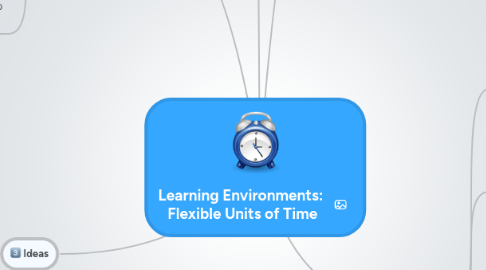
1. Action Points
1.1. community engagement
1.2. Establish Content areas
1.2.1. Core areas + Creativity +Community +??? Who decides?
1.2.1.1. Chugach model: students, BOE, community decided on standard areas and chose 10, including 21st century learning areas.
1.2.1.2. New Hampshire: Districts are in charge of developing standards.
1.3. Get Community Buy-in
1.3.1. "Community" must include colleges in some way.
1.4. Encourage student ownership of education
1.4.1. "...each student constructs a School-to-Life plan, ultimately presenting it to the school board prior to graduation." The Chugach model
1.4.2. Students use various modes of "out of seat" education delivery: online, internships, work programs.
1.4.2.1. Students across the state are obtaining competency-based credits through online courses and extended-learning programs, generally defined as out-of-school options that could include apprenticeships, independent study, or community service.
2. Ideas
2.1. Student and Education Team build an individualized plan
2.1.1. Class Time
2.1.2. Online learning
2.1.3. Work, Internships, Apprenticeships
2.1.4. Community Service
2.2. Infrastructure must be flexible, with appropriate technology strucutres
2.3. Community determines what standards are most appropriate for students, based on local and global employment requirements.
2.3.1. BOE
2.3.2. Community Leadership Team
2.3.3. Parent Consortium
2.3.4. STUDENTS!
2.4. Develop a badging system, a tracking portfolio, or web-based device to confirm competency levels on all standards.
3. What is Competency Based Learning?
3.1. Many state education institutions are coming to see that Carnegie Units (120 hours of "seat time" in a school year to create 1 credit) are a less effective indicator of learning than portfolios of competencies.
4. Goals
4.1. Personalized education
4.1.1. Students learn at their best developmental pace, developing interest-based relevant individual learning plans and projects that help each individual master academic skills.
4.1.2. What's constant is learning. Time is the variable
4.1.3. Students are more likely to stay in school and prepared themselves for the working world.
4.2. Marketable skills, based on individualized learning programs, leading to being competitive in the job market.
4.2.1. High graduation and subsequent schooling/employment rates: Chugach model
4.2.2. "Performance based 'market' accountability" leading to students being successful in employment.
4.3. 21st century learning skills
4.3.1. Innovation, creation, collaboration, ICT, and ESPECIALLY the Life and Career Skills of adaptability and responsibility
5. Problems
5.1. Carnegie Units (Credit awarded, based on seat time in class)
5.1.1. Entrenched tradition, hard to let go of
5.1.1.1. Credit-hour definitions embedded into law
5.2. No universal standards, which makes movement between competency-based institutions problematic. NH is the only state to embrace the competency-based credits state-wide.
5.2.1. In New Hampshire, school districts determine their own standards and set competencies, with help from the state which provides a "competency validation rubric" and model competencies."
5.2.2. 5 categories of how states define education credits, further muddy the water
5.3. Community Buy-in
5.3.1. "Get Buy-In: Make sure all stakeholders understand and believe in the vision for 21st century learning. Consider establishing an advisory group of education leaders, business and community leaders, parents and students, and engage this group in the vision-setting process. This kind of collaboration will help create the broad support needed to take effective action." (The MILE guide milestones for improving learning & education, 2009, p. 7)
5.3.2. "Identify a new mission or a need for reform within the school." (Campbell, 2002). What will it be? Drop-out rates? Low state test scores? Low numbers of college-bound seniors? Low numbers of graduates landing 21st century jobs?
5.4. Educator training
5.5. No wide-spread acceptance of mastery credits, rather than Carnegie Units, by colleges
5.5.1. Colorado is revising admissions policies to accept "web-based competency portfolios."
5.5.2. "In higher ed, credit hours drive financial aid decisions and faculty workload and compensation."
